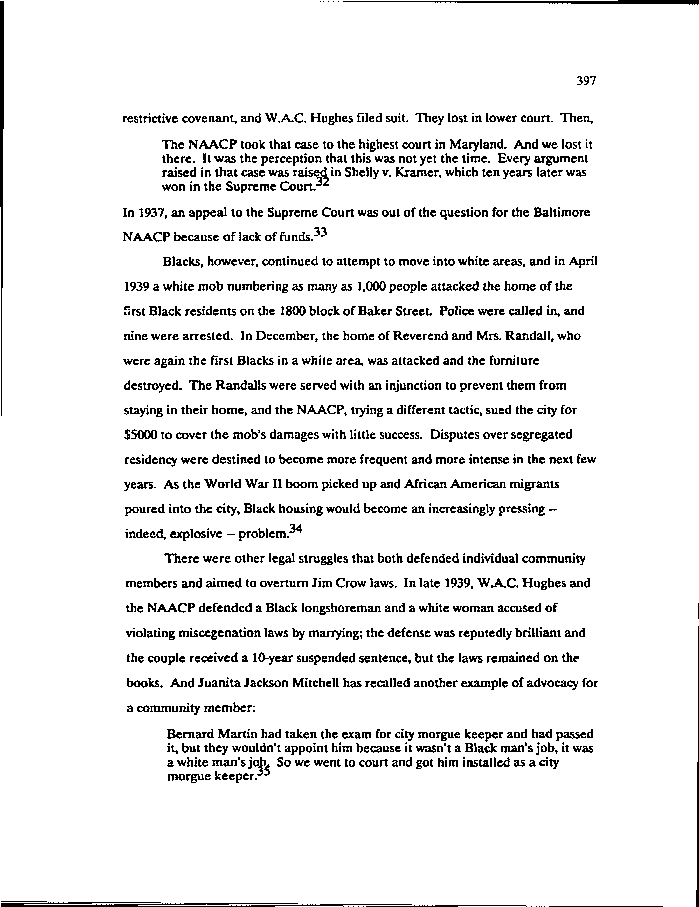|
397
restrictive covenant, and W.A.C. Hughes filed suit. They lost in lower court. Then,
The NAACP took that case to the highest court in Maryland. And we lost it
there. It was the perception that this was not yet the time. Every argument
raised in that case was raised in Shelly v. Kramer, which ten years later was
won in the Supreme Court.
In 1937, an appeal to the Supreme Court was out of the question for the Baltimore
ao
NAACP because of lack of funds.
Blacks, however, continued to attempt to move into white areas, and in April
1939 a white mob numbering as many as 1,000 people attacked the home of the
first Black residents on the 1800 block of Baker Street. Police were called in, and
nine were arrested. In December, the home of Reverend and Mrs. Randall, who
were again the first Blacks in a white area, was attacked and the furniture
destroyed. The Randalls were served with an injunction to prevent them from
staying in their home, and the NAACP, trying a different tactic, sued the city for
$5000 to cover the mob's damages with little success. Disputes over segregated
residency were destined to become more frequent and more intense in the next few
years. As the World War II boom picked up and African American migrants
poured into the city, Black housing would become an increasingly pressing
indeed, explosive problem/*4
There were other legal struggles that both defended individual community
members and aimed to overturn Jim Crow laws. In late 1939, W.A.C. Hughes and
the NAACP defended a Black longshoreman and a white woman accused of
violating miscegenation laws by marrying; the defense was reputedly brilliant and
the couple received a 10-year suspended sentence, but the laws remained on the
books. And Juanita Jackson Mitchell has recalled another example of advocacy for
a community member:
Bernard Martin had taken the exam for city morgue keeper and had passed
it, but they wouldn't appoint him because it wasn't a Black man's job, it was
a white man's job. So we went to court and got him installed as a city
morgue keeper.^
|

